70 Interesting Facts About Peru That Will Amaze and Inspire You

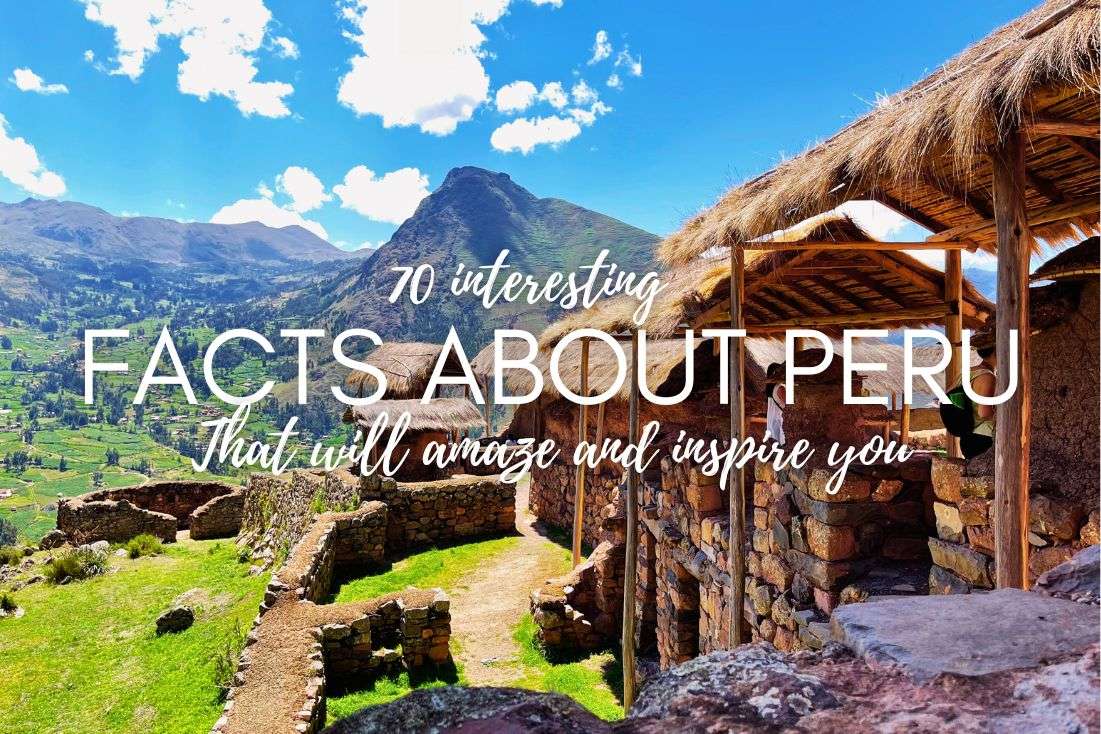
Can you guess which country has breathtaking landscapes, fascinating history, vibrant culture, adorable llamas, and one of the world’s most iconic ancient sites? You clicked the title, so you already know—it’s Peru! From the majestic Machu Picchu to the llama drama in the Andes and the sheer madness of 4,000 types of potatoes, Peru is full of surprises.
This South American gem somehow packs the Amazon, the Andes, and the Pacific Coast into one country. Add ancient ruins, unique traditions, and wildlife that will spit on you if you get too close, and you’ve got yourself a destination worth obsessing over.
So, whether you’re planning a trip or just procrastinating at work, here are 70 interesting facts about Peru that might make you want to pack your bags—or at least your llama wool sweater.
Tip: If you are planning a trip to Peru, check out my 2-week and 4-week itineraries. That way, you can spend more time reading about funny Peruvian traditions and less time frying your brain with logistics (because I’ve done that part for you already).
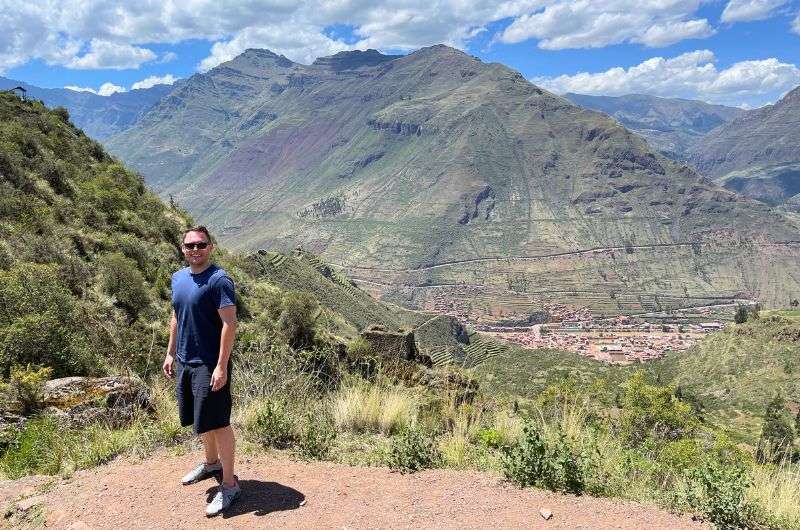
Peru is an extremely interesting travel destination
If you’re like me, you know how much some extra background knowledge about the country you’re visiting can elevate your travel experience. So, are you ready to learn more about this beautiful South American country? Let's dive in straight to some of the most interesting facts about Peru!
I’m a history nerd, so you know I put together an especially fantastic overview of Peru’s history facts. If your brain short-circuits from amazement, you’re welcome!
My top tips about visiting Peru:
- You won’t go hungry! Portion sizes are huge and the food in Peru is fantastic. Peruvian cuisine is one of my favorites.
- Peru is huge. Plan on taking domestic flights to save time. Rent a car in each destination for shorter trips.
- Don’t linger too long in Lima. Peru’s capital wasn’t exactly my favorite spot. You can cover the highlights in a day, then move on to the real stars—Machu Picchu, the Sacred Valley, and the places like Paracas and Arequipa. Check out all of my Peru itineraries for ideas! There’s a Lima itinerary in there, too.
- Can’t get enough? Read all of my top travel tips for visiting Peru before you head out on your vacation.
- Stay in international hotel chains. Not something I usually do, but in Peru, the value for money is very low in local hotels. My favorites were Hilton Garden Inn in Cusco and the Radisson Red in Lima.
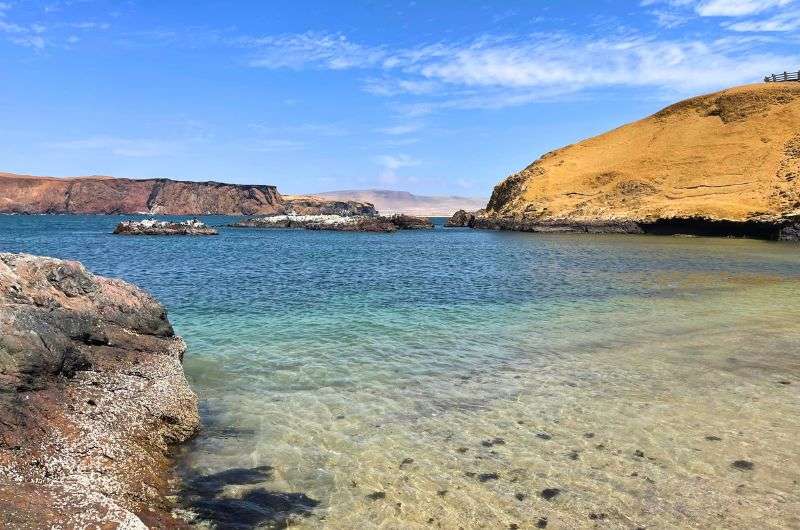
From my visit of the remarkable Paracas
Peru people facts
1. Peru has over 33 million people and a mix of cultures
Peru is home to over 33 million people, making it a multiethnic and multicultural wonderland. Its population is a blend of groups with diverse cultural backgrounds and unique characteristics—basically a giant human tapestry.
2. Two-thirds of Peruvians are Mestizos
About two-thirds of Peruvians are Mestizos, people of mixed indigenous and European ancestry. This traces back to when the Spaniards arrived, colonized Peru, and, well… got busy multiplying.
3. Indigenous people make up about a third of Peru’s population
One-third of Peruvians are descendants of indigenous tribes, with a small percentage hailing from European, Asian, and African backgrounds. This diverse mix gives Peru its vibrant cultural identity.
4. Peru’s social hierarchy is still influenced by ethnicity
Unfortunately, even in the 21st century, Peruvian society shows clear stratification along ethnic lines. Those of European descent dominate government and high-level corporate roles. Mestizos often work administrative jobs or run small businesses. Indigenous Peruvians are disproportionately involved in farming and frequently face struggles just to survive.
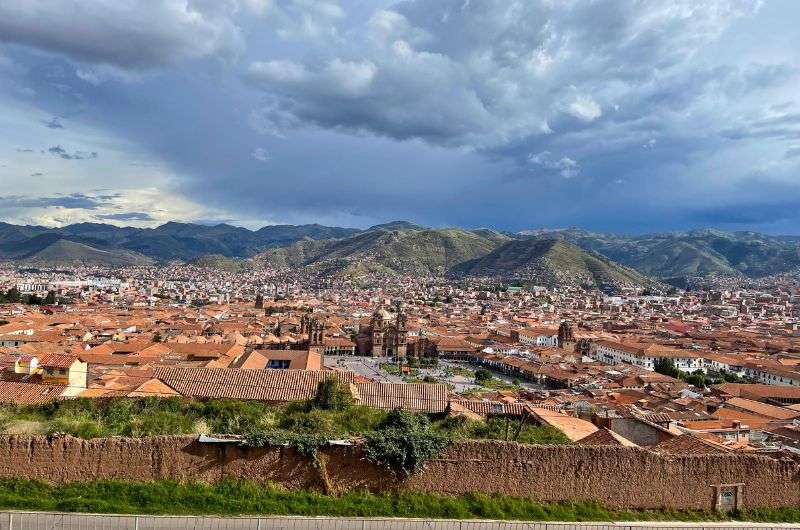
Cusco
5. What are Peruvians like? Spoiler: They’re awesome!
What are these 33 million people like, you ask? They’re awesome! Check out my Peru travel tips article for more on our personal experiences with these wonderful, warm-hearted people.
Too bad being lovely people doesn’t automatically rid a country of political nonsense. Peru’s politics is… gossip-worthy! Pay attention to these politically-themed fun facts:
Sometimes, all you need to do is take the first step... I've filtered out the best hotels in Peru for you
Save it for yourself to come back to later, or share with your friends on social media!
I've already planned your ititnerary for the trip, complete with my travel tips.
Peru politics and government facts
6. Peru is a constitutional republic (with a twist of chaos)
Peru is a constitutional republic with a president and a multi-party system. The president is head of state and head of government.
The path to Peru’s democracy has been lined with multiple military coups and numerous constitution rewrites, corruption, problems, and just overall chaos.
7. Peru’s democracy is still figuring things out
In 2021, Pedro Castillo became Peru’s first left-wing president in decades, reflecting widespread frustration with inequality. But his time in office was anything but smooth—constant corruption investigations and protests over rising prices made sure of that.
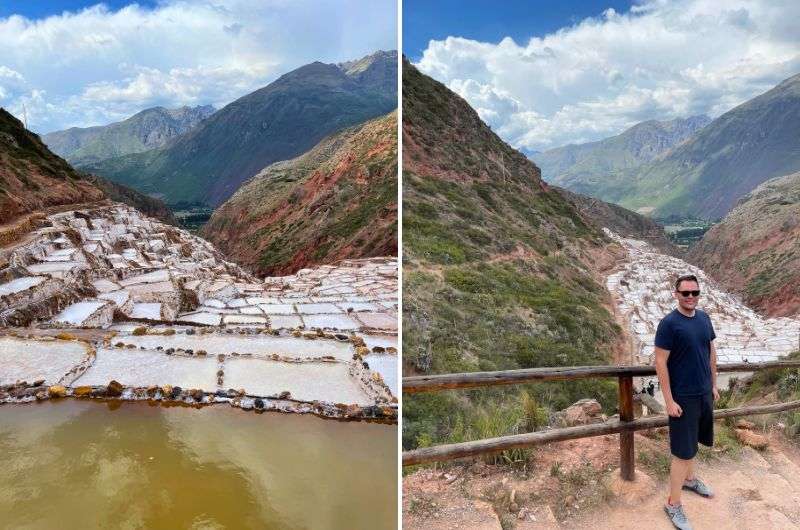
The salt mines in Maras
In true Peruvian political style, things got dramatic. In December 2022, Castillo attempted to dissolve Congress (never a great idea) and was promptly removed. Dina Boluarte, his vice president, stepped in, becoming Peru’s first female president. Since then, her approval ratings have sunk to record lows—around 4%—and corruption scandals haven’t exactly helped.
Peru might have shifted left, but the nation is still waiting for a government that can do more than just survive scandals. If you’re hoping for stability, well… join the queue.
8. Voting is mandatory in Peru—for most
In Peru, voting isn’t just a right; it’s the law. From the time Peruvians turn 18 until they hit 70, casting a vote in elections is mandatory. Skipping out could result in a fine—talk about a strong incentive to stay politically engaged!
9. Peru’s regions govern themselves (mostly)
Peru’s 25 regions each have their own regional and local governments. While this decentralization gives regions some autonomy, national politics often overshadow local priorities.
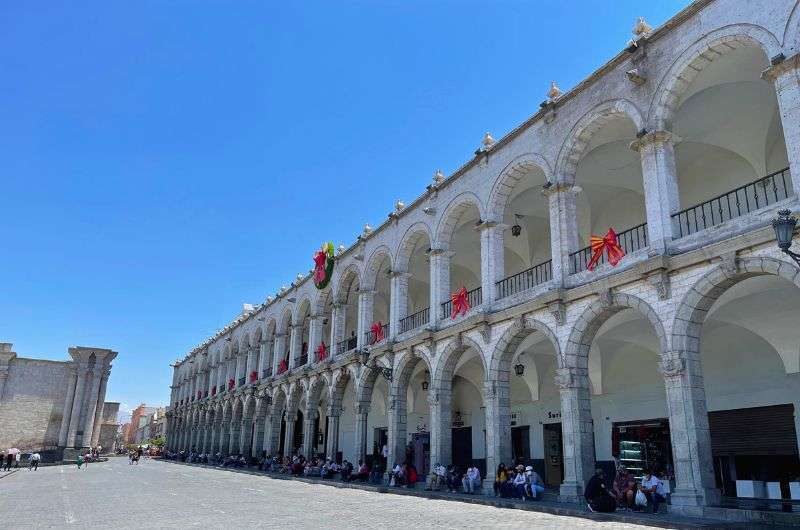
Architecture that can be seen on the square in Arequipa
10. At least 30% of political candidates in Peru must be women
Here’s a surprisingly progressive fact: There is a gender quota law in Peru that makes it mandatory for women to take up at least 30% of the candidates on a party list, which has resulted in about ¼ of Congress seats being sat on by women. Unexpected, eh?
In 2020, Peru took a more progressive step by enacting a law that mandates gender parity in congressional elections. The law stipulates that 40% of congressional candidates be female by 2021, 45% by 2026, and 50% by 2031.
Peru economy facts
11. Peru is one of the world’s fastest-growing economies
This might be surprising to some, but Peru is one of the world's fastest-growing economies. Most of the trade and industries are located in Lima, but since the country also relies heavily on agricultural exports, regions across the nation benefit from it.

12. Peru’s economic inequality is built into the system
The incompetence of the governments historically have resulted in stark economic inequality, corruption and crappy labor laws, which have benefited everyone that knows the right people and done nothing for the poorer people of Peru.
Read through the history of Peru below to get a better understanding of the unbelievable amount of turmoil in Peru’s government that is so obviously tied to the economic instability of the country.
13. Copper, gold, and fish exports keep Peru afloat
Peru's main exports are copper, gold, zinc, textiles, chemicals, machinery and fish. The US, China, Brazil, EU and Chile are Peru’s best trade buddies, with established free trade agreements between them and Peru.
14. The Lima Consensus has widened Peru’s wealth gap
The country’s elite are big fans of the Lima Consensus which are a bunch of de-regulatory, far-right policies that aim to create a neoliberal economy. Among others, some of the policies cut social programs, resulting in further inequalities and worse access to education, justice and security for the majority of the regular population.
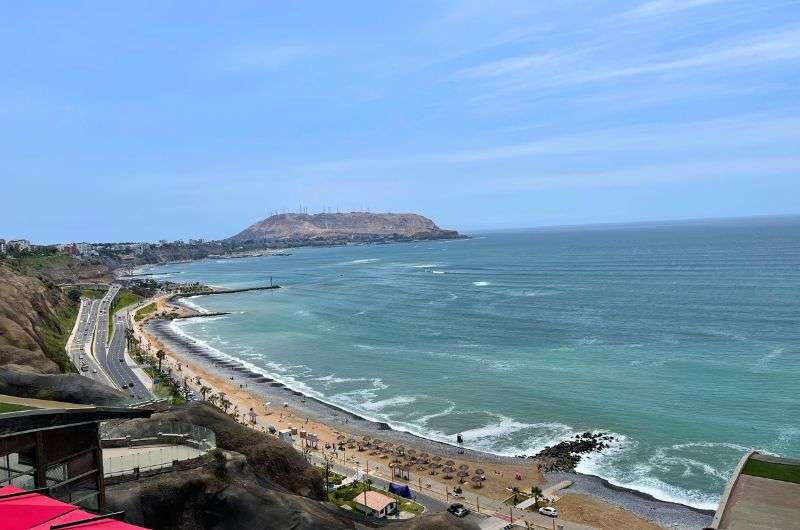
Miraflores, Lima
Peru geography facts
15. Peru shares borders with five countries in South America and the Pacific Ocean
Peru is located in the west of South America. It shares borders with Ecuador, Colombia, Brazil, Bolivia, and Chile. The Pacific Ocean gives Peru 3,000 km (1,900 miles) of coastline full of totally useless beaches, at least for the sunbathing and swimming-type folks. This isn’t the Mediterranean. The water is just too cold for comfort, even in the summer, so don’t make Peru your beach vacation destination.
16. The Peruvian coastline offers stunning views, not sunbathing
This is not to say the coastline isn’t pretty—we spent hours in Paracas National Reserve taking in the dramatic cliffs dropping down to the sea and were very enamored by them!

17. Lake Titicaca is the highest navigable lake in the world
Sitting at a breathtaking 3,812 m (12,507 ft) above sea level, Lake Titicaca is the world’s highest navigable lake. It’s also home to the legendary Uros floating islands, made entirely of reeds.
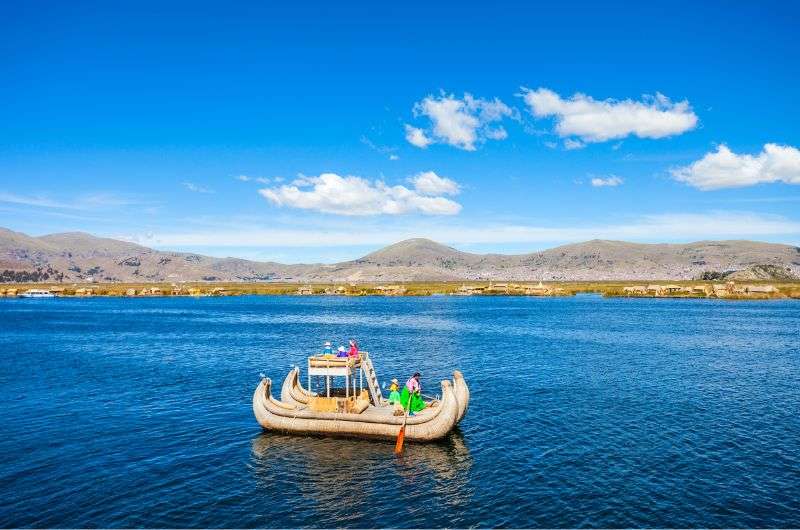
Lake Titicaca is inhabited by the Uros, who have built their own little islands on it
18. The Amazon Rainforest dominates northern Peru
You’ll find a completely different landscape in the north—the Amazon Rainforest. The Pacaya Samiria National Reserve is the place to experience it (just know that there are no roads into the gateway city—Iquitos). Interestingly, Peru has the second-largest portion of the Amazon Rainforest after Brazil.
19. The Peruvian Andes Mountains split Peru in half
Slicing Peru down the middle are the mighty Andes Mountains. This is where you’ll be picking your jaw up off the floor on every turn, especially in Sacred Valley and, of course, in Machu Picchu. To the east of the mountains the land turns into more jungle.
20. Lima is the capital, but Peru has so much more
Peru’s capital, Lima (decidedly not our favorite place), is about halfway down the coast of Peru, but for most visitors, it’s the most north they’ll get in the country. But remember you can venture out to some great and lesser known ruins if you dare to go north, not to mention the Peruvian Amazon Jungle.
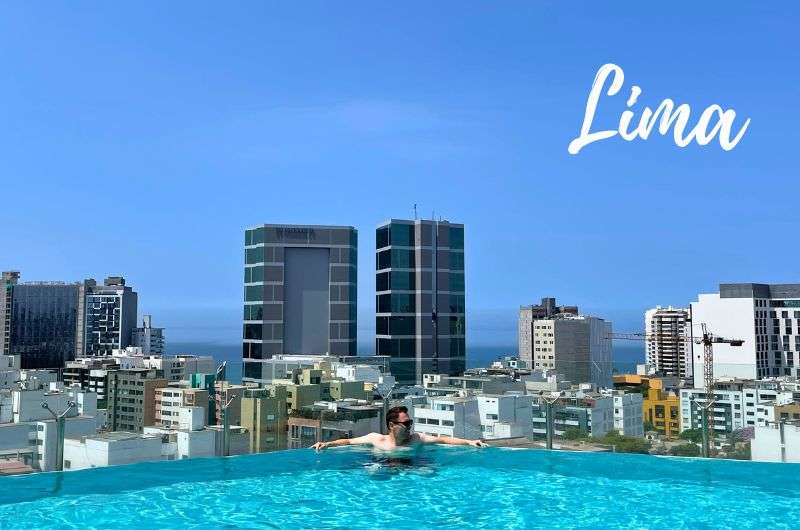
Don't stay too long in Lima, but when you are there, make it nice for yourself and pick a good hotel (this is Hilton Lima Miraflores)
Hotel tip: No matter where in the country you go, there’s a fantastic hotel experience available to you. I put together some of what we think are the best options in my best luxury hotels in Peru article.
Peru Machu Picchu facts
21. Machu Picchu was unknown to the outside world until 1911
Machu Picchu, the "Lost City of the Incas," was rediscovered by American explorer Hiram Bingham in 1911. The locals always knew it was there, but Bingham gets the credit for putting it on the world map (and, arguably, every traveler’s bucket list).
22. It’s not actually the "Lost City"
Contrary to popular belief, Machu Picchu isn’t the true Lost City of the Incas—that title belongs to Vilcabamba, the city where the Incas made their last stand against the Spanish conquest. Vilcabamba is hidden even deeper in the jungle and lacks the polished Instagram-ready vibes of Machu Picchu.
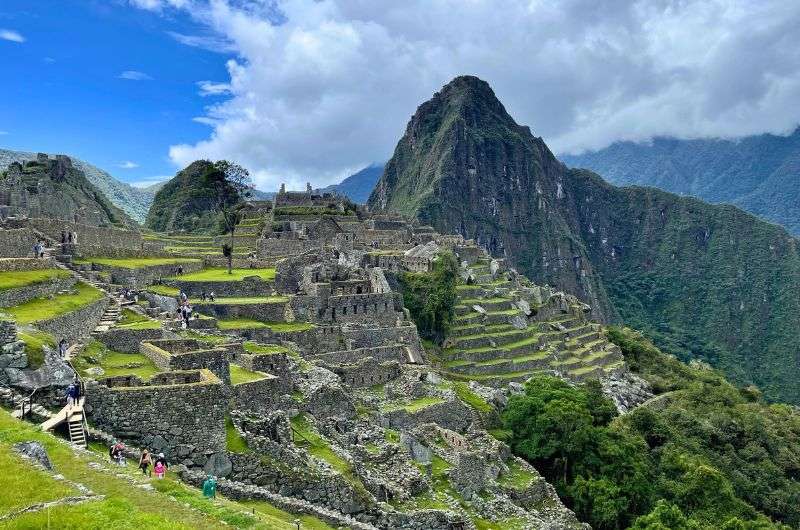
Machu Picchu is a blast, but it's not the real "Lost City of the Incas"
23. It’s made of earthquake-proof stonework
The Incas were master builders. The stones in Machu Picchu fit together so perfectly (without mortar!) that even earthquakes couldn’t shake them loose. Take that, modern architects.
Built in the 15th century, Machu Picchu is so well-preserved and awe-inspiring that it was named one of the New Seven Wonders of the World in 2007.
24. There’s still a debate about what it was used for
Was it a royal estate? A sacred religious site? A luxurious Inca spa retreat? No one knows for sure, but one thing’s certain: the Incas had excellent taste in real estate. I was sceptical about they hype for Machu Picchu, but it was all I ever hoped for and more (despite the huge downpour!).
Speaking of history, how about some interesting facts about Peru, the Incas, and how it all started?
Peru history facts
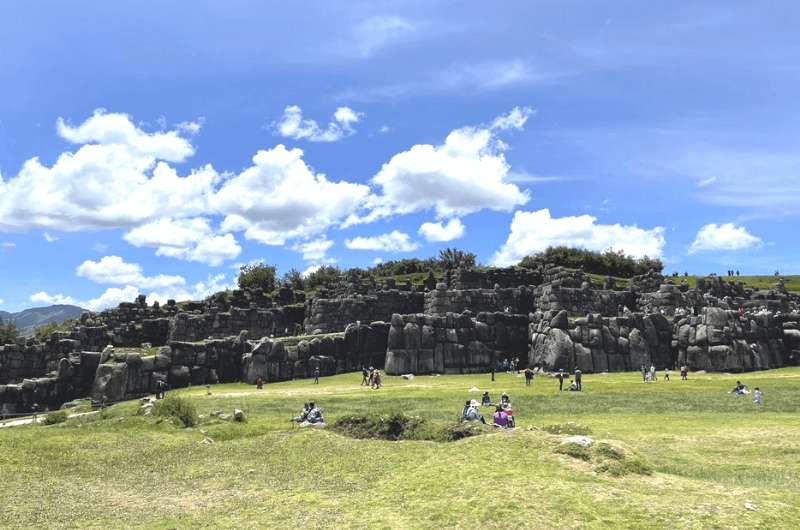
Sacsayhuaman ruins in Cusco
25. Peru is one of the cradles of civilization
Peru is home to the Norte Chico people, the oldest civilization in the Americas. This makes the history of what is now Peru one of the longest and most complex in the world.
26. The Paracas culture started desert societies in 700 BCE
We’ll skip a few thousand years to 700 BCE when the first major desert society emerged—the Paracas culture. We have a bit more information about these mummy-bundling, cranial deformation fans in my Paracas article (a must-do stop on your Peru itinerary, btw). They also weaved.
27. The Wari created an empire and inspired the Incas
The first regional empire was established a couple hundred years later by the Wari people. They did cool things like start the highway network and put together an administrative system. The Incas eventually copied their homework and claimed all the credit.
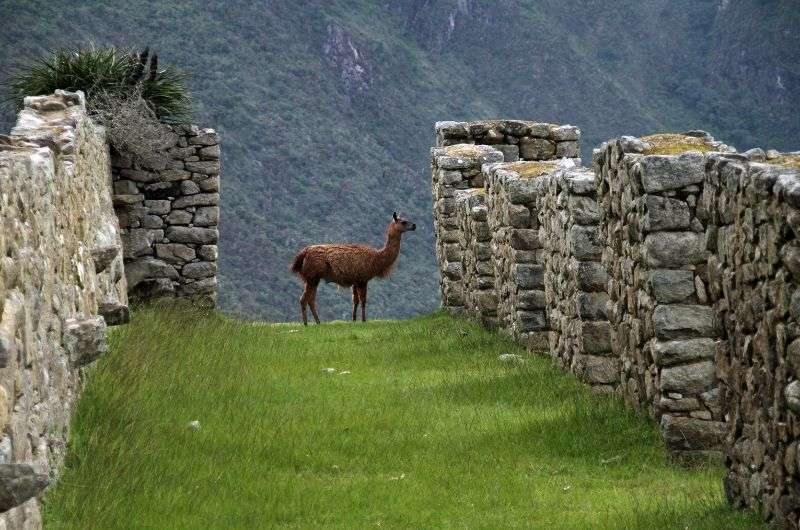
The real Lost City of the Incas is Vilcabamba
Fun fact: Did you know that the actual Lost City of the Incas isn’t really Machu Picchu? It’s the much more mysterious Vilcabamba. And it was none other than the Wari that built Vilcambama, not the Incas. It’s all very confusing and fascinating. See my Best Ruins in Peru article for more details.
28. The Nazca, Moche, and Chimu left behind iconic ruins
Many other cultures emerged and then got swallowed by better, stronger cultures. Some of the notable ones are Nazca (click on over to my Nazca Lines article for more on them and their huge geoglyphs), Moche, and Chimu. The latter left behind the world’s second-largest mud brick city, Chan Chan.

29. The Incas ruled the largest empire in the Americas, with the Sacred Valley at its heart
One of the most powerful cultures to take over many of the existing ones (but in a nice way, sort of) were the Incas. The Inca Empire lasted from 1438–1532 and was based in Cusco, but extended way beyond Peru to parts of Colombia, Chile, Ecuador, and Argentina.
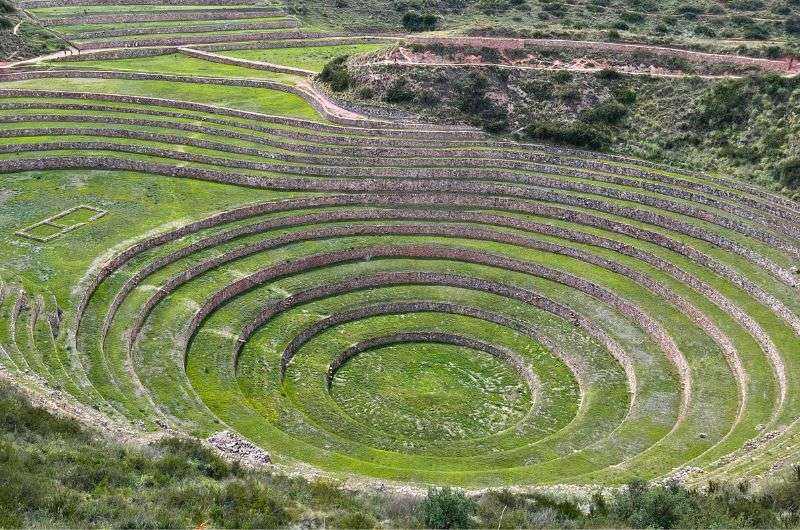
The Moray Inca site
The Incas were a very advanced dynasty whose power and size could be compared to the Roman or Mongol Empires. The Inca Empire was the largest ever in the entire Americas. The official language was Quechua.
Travel tip: The entire Sacred Valley, which was the spiritual center of the Inca Empire, is full of Inca-related places of interest. See our list of the best places in Sacred Valley to find out what’s worth seeing. But mostly, don’t just go to Cusco and Machu Picchu and call it a day. Sacred Valley has some of the most spectacular scenery I’ve ever seen. (And the worst altitude sickness I’ve ever experienced!)
30. The Incas’ architecture and agriculture were ingenious
The Incas weren’t just empire builders—they were mad scientists. They used terraces as agricultural labs (hello, Moray!) and created salt pans with clever irrigation systems. Their stone structures are so precise that even earthquakes gave up trying to mess with them.
When you see the precise cutting of the stones used for building Inca structures, you’ll understand why they didn’t need to use mortar to keep them in place.

The Incas were masters of architecture
31. The Spanish conquest turned temples into churches
In 1531, Francisco Pizarro and his Spanish army strolled into Peru, lured by tales of gold and glory. Cusco quickly became a Spanish settlement, and the Incas were enslaved to dismantle their temples—only to see them rebuilt as churches. Talk about adding insult to injury.
32. Lima became Spain’s power hub in South America
Despite the Incas’ fierce resistance, the Spanish ultimately won, establishing Lima in 1535 as the HQ for Spanish rule in South America. With trade routes pumping precious metals to Spain, the Spanish got rich while the locals got, well, nothing but grief. Another route through Mexico served the Pacific.
By the 19th century, fed-up populations across South America (with a little funding from Chile) started giving Spain the boot. Peru’s chapter in the independence saga was just one part of the larger anti-colonial mic drop.
33. Peru gained independence in 1821, but Spain took its time recognizing it
Peru was proclaimed independent in 1821, though it took Spain until 1879 to recognize this independence. In denial much?
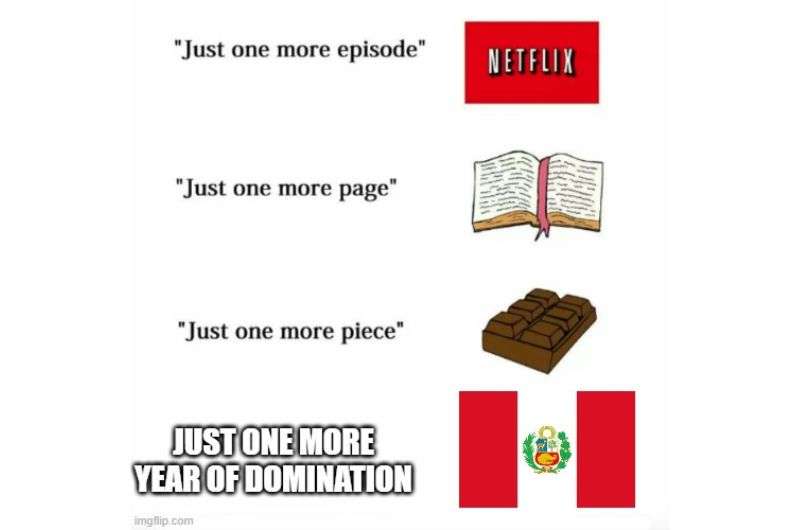
Letting Peru go was a long overdue move for the Spanish
34. The War of the Pacific still impacts Peru today
From 1879 to 1884, the War of the Pacific saw Peru dragged into conflict when Bolivia invoked its alliance with them against Chile. Peru lost parts of its territory, including the Atacama region (which, quite frankly, is an amazing part of Chile to visit and I highly recommend it, even if it’s “stolen property”), and widespread looting by Chilean troops left scars. Peru’s relationship with Chile remains chilly to this day.
After the war, a lot of rebuilding and reforming started to happen to try to get Peru back up on its feet. It didn’t help that in 1922 a treaty was signed with Colombia that ceeded a large portion of the Peruvian Amazon to Colombia, granting them access to the Amazon River.
35. The 20th century was a mix of coups, reforms, and chaos
Peru’s 20th century was a revolving door of governments, coups, and "let’s give socialism a try" experiments. It didn’t help that military leaders kept taking over like they were auditioning for Game of Thrones.
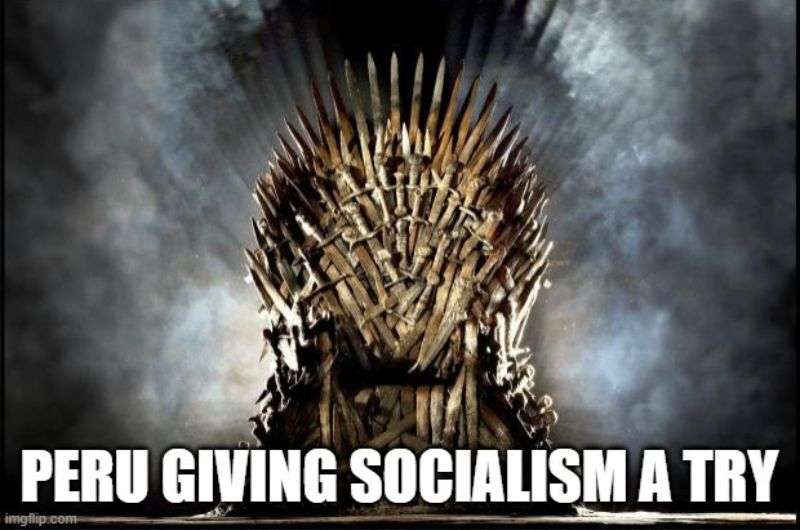
36. The Shining Path turned the 1980s into chaos
The 1980s in Peru were a time of economic turbulence. After some wins—like a couple of democratically elected presidents and the return of free speech—the negatives once again prevailed. Massive flooding caused by El Niño, hyperinflation, economic mismanagement, and rising social tensions led to the formation of the violent communist guerrilla group, the Shining Path. Protests turned bloody, and insurgent violence swept across the country.
37. Fujimori’s presidency brought reform and controversy
Controversial president Alberto Fujimori ruled Peru from 1990 to 2000. During his term, he managed to drastically reduce inflation rates, implement economic reforms, privatize companies, and attract foreign investment.
Sounds great, right? Not so fast. These changes devalued the currency, caused skyrocketing prices, and left many people jobless. Unsurprisingly, people were furious, and insurgent groups kept up their attacks. Both the government and rebels committed atrocities, making life miserable for many Peruvians.
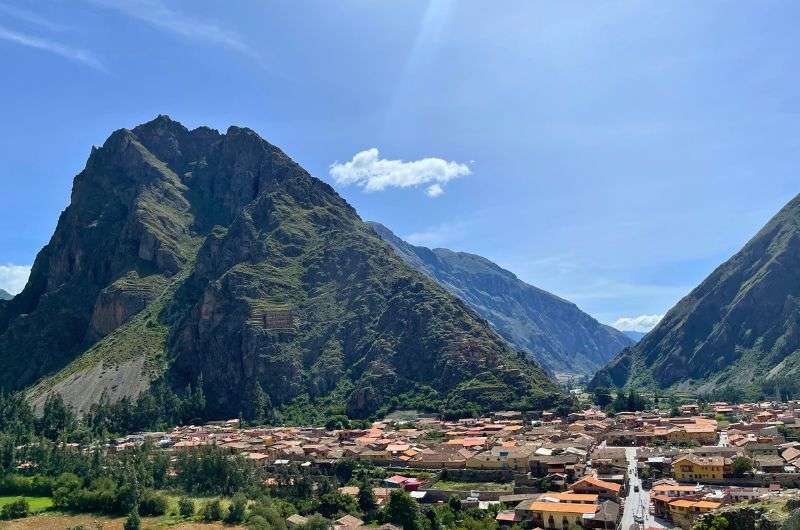
Ollantaytambo
Fujimori’s reign ended in scandal—he fled to Japan to escape human rights violation charges, and his intelligence chief was arrested in Argentina.
38. The 21st century brought hope—and more turmoil
The Toledo Administration took power in 2001, attempting to restore democracy and repair Peru’s battered image. Subsequent presidents also tried to enact reforms, but somehow corruption, rebellions, impeachments, and disappearing presidents still managed to dominate the headlines.
39. Pedro Castillo faces massive challenges in modern Peru
In July 2021, left-wing representative Pedro Castillo became Peru’s president. His presidency hasn’t been easy—he’s dealing with economic struggles caused by COVID (Peru had one of the highest death rates in the world), rising prices from the Ukraine war, and ongoing political instability.
Sure enough, mass protests broke out in March 2022 and lasted until April. Someone please pass the popcorn.
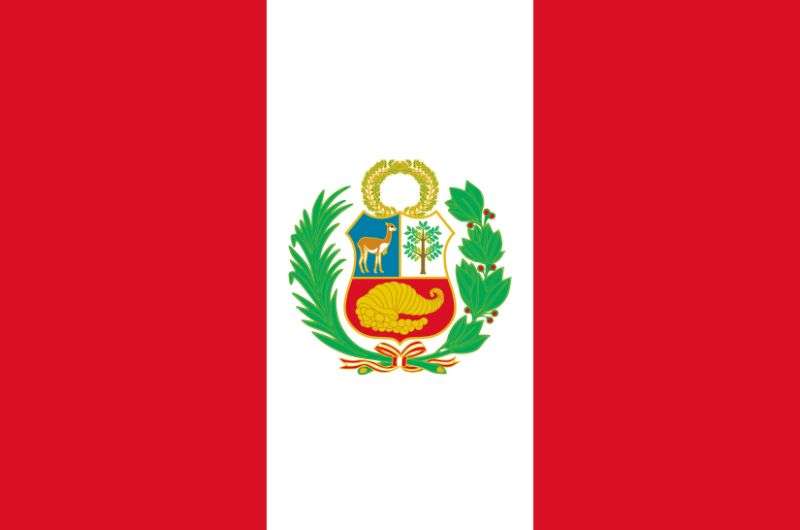
The history of Peru is a bit like a Netflix series
40. Peru’s president was arrested after trying to dissolve Congress
In December 2022, President Pedro Castillo attempted to dissolve Congress and establish an emergency government—a bold (and ultimately disastrous) move widely condemned as a self-coup. Castillo was promptly removed, arrested, and replaced by Vice President Dina Boluarte, who became Peru’s first female president. Who says glass ceilings can’t be shattered by political chaos?
41. Protests under Boluarte turned deadly
Boluarte’s tenure has faced intense protests, with many Peruvians demanding her resignation, the dissolution of Congress, and a new constitution. The government’s response has drawn sharp criticism for excessive use of force, leading to numerous casualties and injuries. Turns out, equal-opportunity leadership includes messing things up just as much as the men before you!
42. Peru’s president has a 4% approval rating
By November 2024, Dina Boluarte’s approval rating had plummeted to an astonishing 4%, making her one of the least popular leaders in the world. To make matters worse, her brother, Nicanor Boluarte, was arrested for corruption, including charges of bribery and involvement in a criminal organization.
43. Political chaos is hurting Peru’s economy
Political instability isn’t just causing protests; it’s scaring off investors, driving up crime rates, and leaving Peru’s economy in a precarious position. Despite the chaos, the Boluarte administration has yet to implement major reforms, proving that in Peru, some things remain consistently disappointing—no matter who’s in charge.
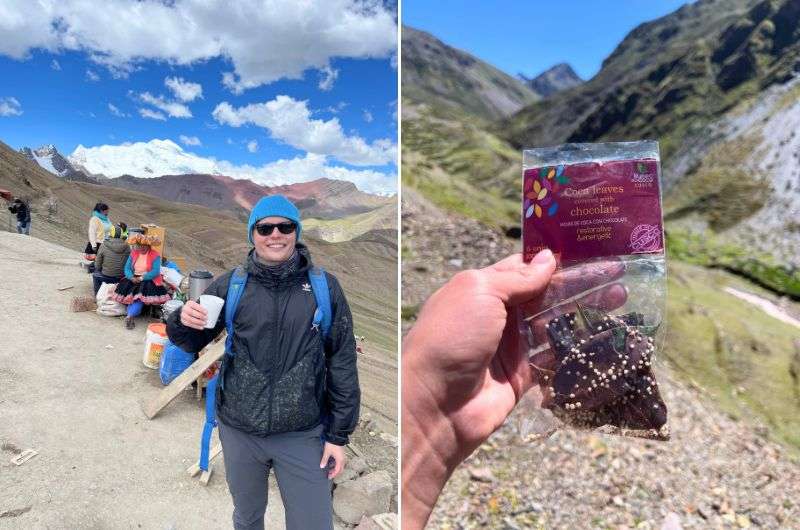
You can get coca leaves almost anywhere in Peru
Perhaps a god or two could help out? That’s right, it’s time to dive into Peru facts about religion!
Peru religion facts
44. Most Peruvians are Catholic thanks to Spanish colonization
The majority of Peruvians have been Catholic Christians since the 16th century, thanks to Spanish colonization. Before that, the locals had a completely different take on divinity—more gods, more drama.
45. The Nazca Lines were likely offerings to the gods
The mystical Nazca Lines in the Peruvian desert are believed by scholars to have been offerings to the gods, particularly the Sun and Water deities. So next time you see a giant geoglyph, just think, "Thanks for the rain, Sun God!"
46. Religious syncretism blends Catholicism with local traditions
With so many Mestizos in Peru, religious syncretism—a mix of Catholicism and indigenous beliefs—developed over time. This fusion created unique traditions, like celebrating Inti Raymi, a festival for the Sun God, on the Catholic feast day of Saints Peter and Paul. Talk about efficient scheduling!
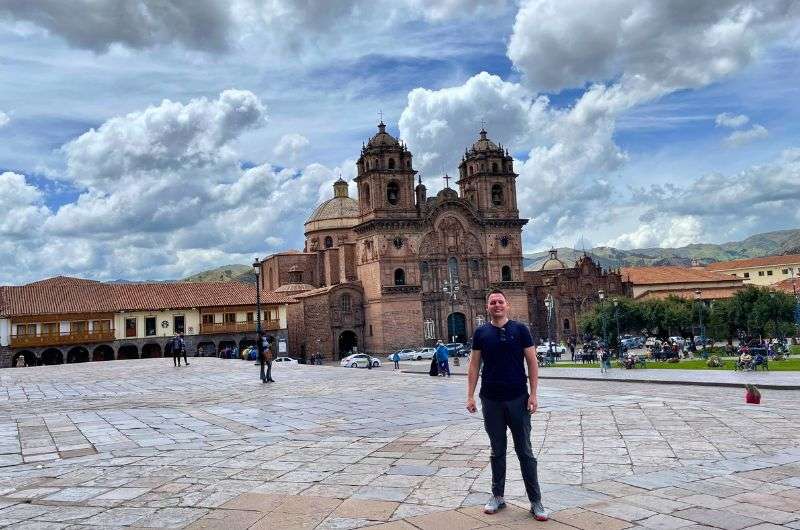
Me and the Cathedral of Cusco
47. Pacha Mama meets the Virgin Mary
One of the most fascinating examples of religious syncretism is the association of Pacha Mama, the Andean earth goddess, with the Christian Virgin Mary. Two powerful women of worship, combined into one incredible cultural crossover.
Peruvian culture, customs, and etiquette
48. Superstitions and traditions are alive and well
Peruvians are big on good luck rituals. For instance, on New Year’s Eve, wearing yellow underwear is believed to bring good fortune. And if you see someone walking around with a suitcase at midnight? They’re wishing for travel in the coming year.
If you’re interested in reading about more fun, funny, and strange traditions, hop over to my article about spending Christmas and New Year’s in Peru.

49. Greetings are a blend of warmth and respect
The handshake reigns supreme in Peru, but don’t forget to make eye contact while you’re at it—no eye contact, no friendship!
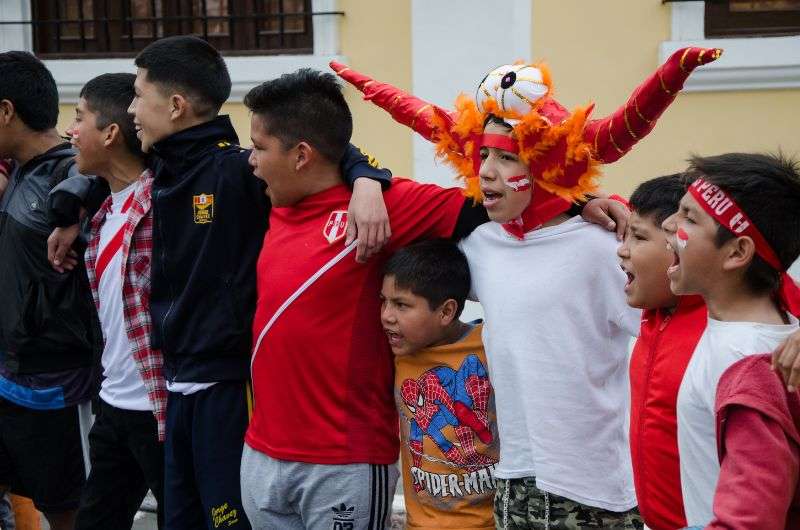
Young Peruvian soccer fans
Among family and friends, the abrazo (a handshake-hug combo for men and a cheek kiss for women) is the go-to greeting.
If you’re meeting someone older or in a formal setting, titles like Señor, Señora, Don, and Doña are used to show respect. Professionals are addressed by their title—so if you’re dealing with a doctor, a polite “Doctor” or “Doctora” goes a long way.
50. Ceviche is more than a dish—it’s a national obsession
Peru’s iconic dish, ceviche, is a source of pride and identity. Made with fresh raw fish marinated in lime juice and served with cancha (toasted corn) and sweet potatoes, it’s basically sunshine on a plate. There’s even a National Ceviche Day celebrated every June 28th.
I last visited in December, but I had ceviche multiple times a day, especially in Lima. It’s. Just. So. Good.
51. Punctuality is a flexible concept
Peruvian time is… let’s say relaxed. If you’re meeting friends or heading to a casual event, don’t stress about arriving exactly on time—it’s almost expected to be fashionably late.
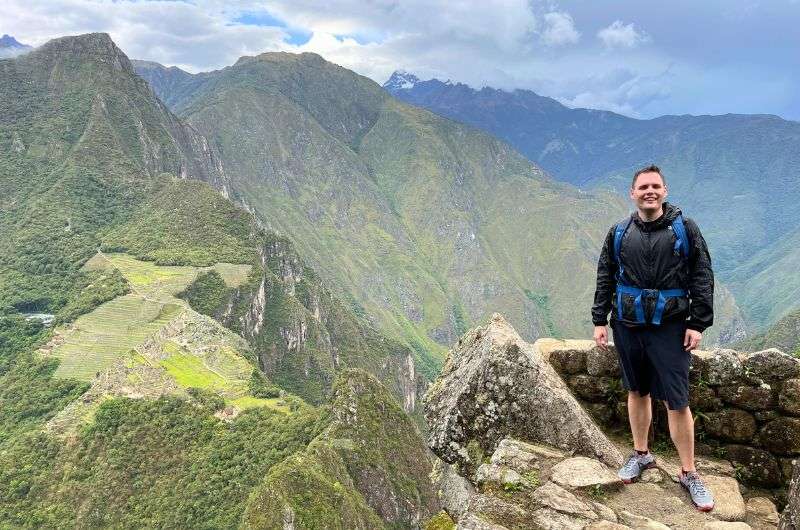
Take enough time for Machu Picchu so you can see everything. But don’t go too early, it's foggy in the mornings
But for formal events or tours, aim to be punctual, because not everyone operates on "Peruvian time."
52. Gift-giving is simple but thoughtful
If you’re invited to someone’s home, bring a small gift like chocolates, wine, or fruit—anything to show appreciation.
Just avoid black or purple flowers, as these are associated with funerals (and nothing says “awkward” like gifting someone mourning flowers at a party).
53. Peruvians love their alpaca fashion
Alpacas aren’t just adorable; they’re also the source of Peru’s luxurious textiles. From cozy scarves to stunning sweaters, alpaca wool is a staple in Peruvian fashion. And no, it’s not the same as llama wool (alpaca is softer, trust me).
Anyway, I don’t think anyone can imagine photos of Peru without adorable alpacas… or was it llamas? Let’s learn a little about these funky animals…
Peru animals facts: llamas, alpacas, and beyond
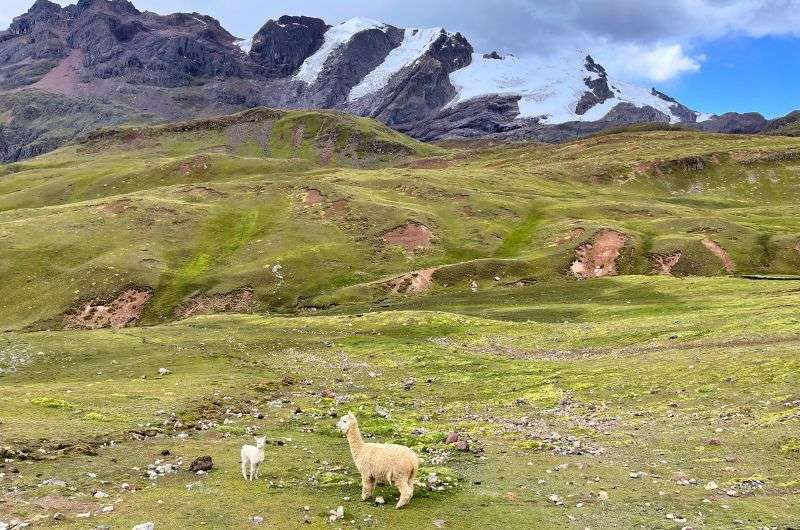
These are alpacas!
54. Peru is home to over 4,000 types of potatoes and 4 types of camelids
Move over, llamas—Peru also has alpacas, vicuñas, and guanacos! These Andean camelids have been helping Peruvians survive high altitudes for centuries by providing wool, transportation, and occasional sass. I dare you to come back from your Peru trip without a single photo with one.
55. Llamas are the OG Inca pack animals
Llamas were domesticated thousands of years ago and were essential to the Inca Empire for carrying goods across mountainous terrain. They’re hardy, adorable, and will absolutely spit on you if they’re annoyed.
56. Alpacas are softer, smaller, and much cuddlier
If llamas are the pack mules of the Peruvian Andes, alpacas are the fashion icons. Their wool is softer than cashmere and highly prized for textiles. Pro tip: Don’t call an alpaca a llama—it’s offensive (to the alpaca, obviously).
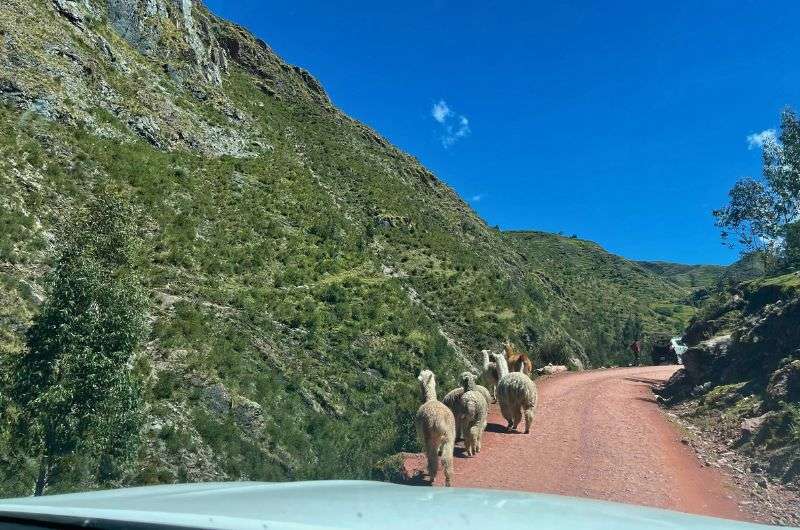
These alpacas delayed us a bit during the car ride, but we were still happy to see them
57. Vicuñas are wild, luxurious, and untouchable
Vicuñas, the wild cousins of alpacas, produce some of the most expensive wool in the world. Their coats are so fine and rare that ancient Incas declared them sacred. Harvesting their wool involves chasing them down—an event called a chaccu—before releasing them back into the wild.
Smarty pants tip: I learned all these interesting facts about llamas and alpacas (and those other guys) in Mundo Alpaca, (an interactive museum), one of the best things to do in Cusco.

58. The condor is the king of the Andes
The Andean condor, with a wingspan of up to 10 feet, is one of the largest flying birds in the world. These majestic scavengers are a symbol of freedom in Andean culture and are often spotted soaring over Colca Canyon, one of the deepest canyons in the world (read about my experience with condors and canyons in my article about top places to visit in Arequipa). They aren’t exactly pretty birds, but they are huge!
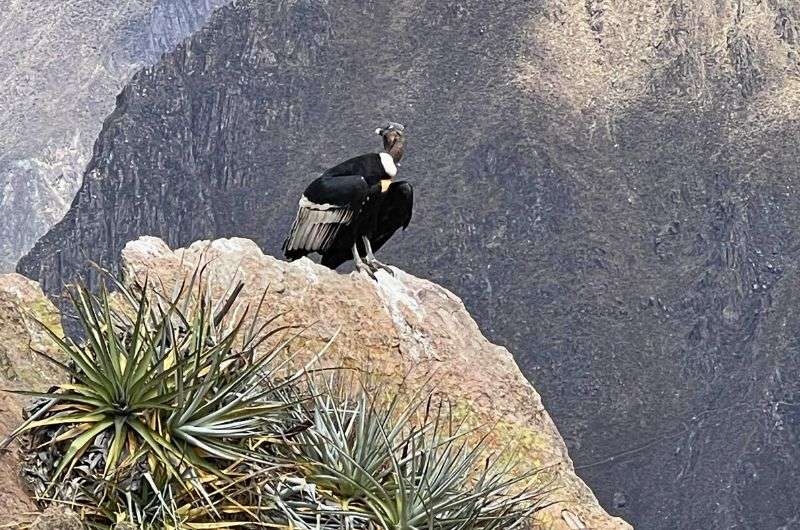
I managed to capture a photo of this condor at Colca Canyon
59. Guinea pigs aren’t just pets—they’re dinner
Peruvians have been eating roasted guinea pig (cuy) for centuries, considering it a delicacy. It’s especially popular during festivals, where it’s served roasted or fried. Even Jesus ate cuy for his Last Supper! Really, the mural in Cusco’s cathedral says so.
Peru facts about climate and weather
60. Peru is one of the world’s 12 megadiverse countries
Have you ever heard of such a thing? There are 12 megadiverse countries in the world, and Peru is one of them. Given its geographical diversity, there are so many species living within its borders it’s crazy. Peru is top 5 in the world based on how many different plants and animals live in it.
61. Peru contains an incredible 84 of the world’s 117 life zones
But wait, that’s not all—Peru has the greatest climate range within a single country in the world. There are 117 life zones that have been identified on our Earth, and Peru contains 84 of them. It’s like a miniature planet!
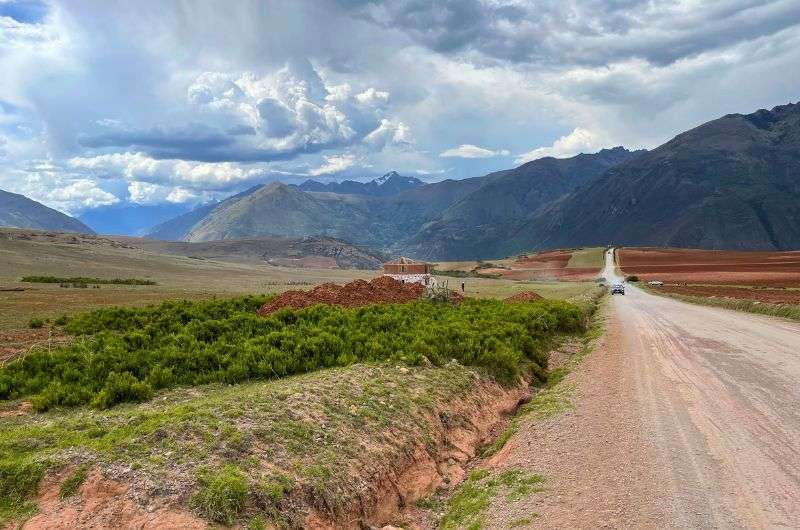
Go to Peru! There’s a lot to see
62. Peru’s coast is dry, foggy, and hot
The coast is usually dry, often foggy, and hot. If you’re looking for sunny beach vibes, think again—it’s more desert than tropical.
63. The mountains have opposite seasons: dry summer, wet winter
In the mountains, summer is the dry season, and winter is the rainy season. This is where you’ll find Machu Picchu, Cusco, Rainbow Mountain, and Sacred Valley, so planning your trip around the wet season is pretty important.
Unless, of course, you’re me and you travel smack in the middle of wet season and get totally soaked at Machu Picchu within two minutes of a massive downpour.
64. Mountain weather is mild but wet (bring layers!)
You’re looking at temperatures around 20°C (68°F) year-round during the day, so not bad at all. Even if you do get wet, you won’t be freezing—unless you’re on one of the more serious mountain treks. Pro tip: Always bring layers.
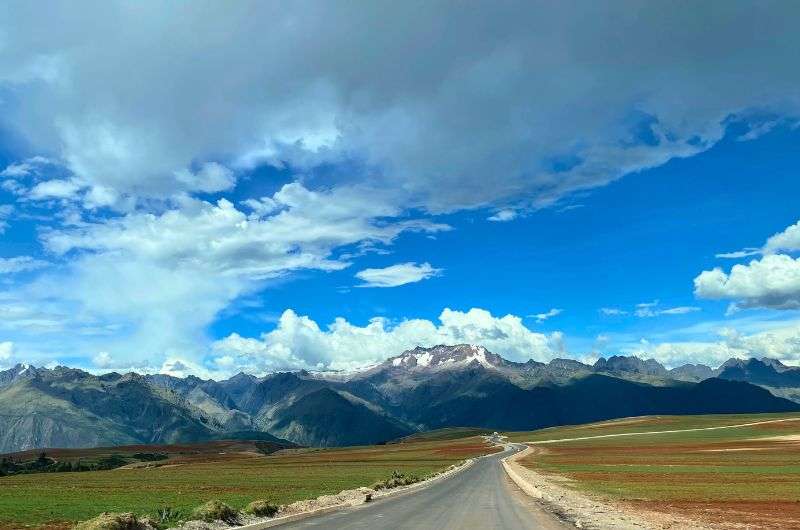
On the way to the Peruvian mountains
65. The jungle is hot, humid, and drenched in rain
Weather in the jungle is as you’d expect—either humid or very humid, rainy or very rainy, and always hot. It’s not for the faint of heart, but it’s definitely an adventure.
For more details about the weather in the various regions, check out my article with 39 Peru Travel Tips.
Peru language facts
66. Spanish is Peru’s primary official language
The official language in Peru is Spanish, spoken by about 80% of the population. Most people in coastal cities speak only Spanish, so you’re safe there.
But venture into rural or highland areas, and you’ll find that many Peruvians are multilingual—and might not even speak Spanish as their first language.
67. Quechua and Aymara also have official status
In regions where they are prevalent, Quechua and Aymara also share official language status with Spanish. Cusco, often called the cultural hub of Quechua, is where you can immerse yourself in the heart of this ancient language.
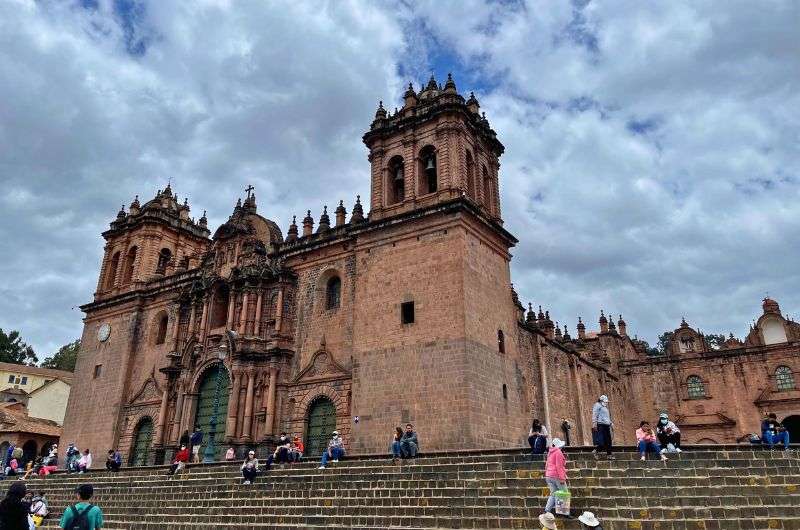
Quechua is used mainly in Cusco
Fun fact: Quechua was spoken more than 1,000 years before the Inca Empire, making it a true OG of Andean languages.
68. Quechua isn’t one language—it’s 45 dialects
Peru’s Quechua is considered the original form of the language. It’s also generally agreed that it was spoken more than 1000 years before the Inca Empire. Quechua itself is very diverse and has about 45 dialects!
69. Good luck finding fluent English speakers outside Lima or Cusco
English? What’s that? Outside Lima or Cusco, don’t expect much English to be spoken. This can be frustrating—or wildly entertaining—depending on your attitude. Pro tip: Learn a few Spanish basics, or bring a translation app to avoid accidental mime performances.
- buenas tardes (good afternoon)
- por favor (please)
- gracias (thank you)
- and my personal favorite, una cerveza, por favor (one beer, please!)
70. When in doubt, use the universal language of gestures
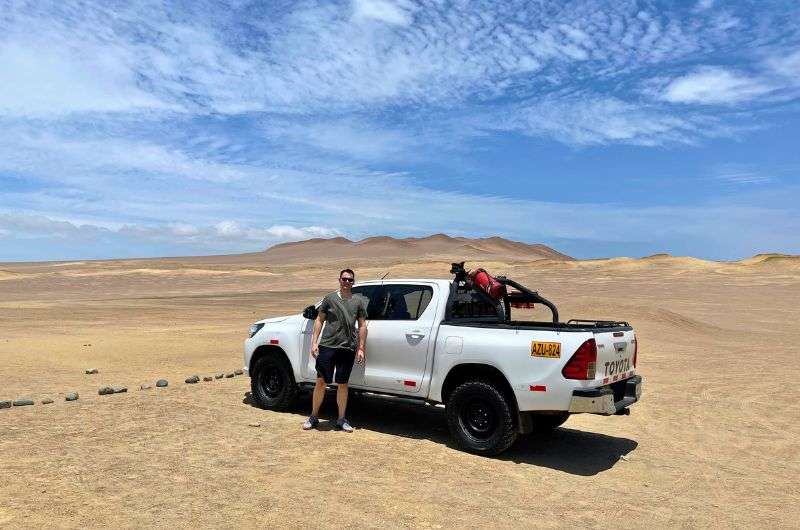
And that my last fun fact about Peru. I’ll be back!
If Spanish phrases aren’t sticking and Google Translate isn’t an option, don’t worry. Peruvians are open-minded and will make an effort to understand you. Plus, using your hands and feet to communicate makes for a hilarious and memorable travel experience.
Sometimes, all you need to do is take the first step... I've filtered out the best hotels in Peru for you
Save it for yourself to come back to later, or share with your friends on social media!
I've already planned your ititnerary for the trip, complete with my travel tips.
This post contains affiliate links. I earn a small commission if you make bookings through my links, at no additional cost to you. Thank you for your support!




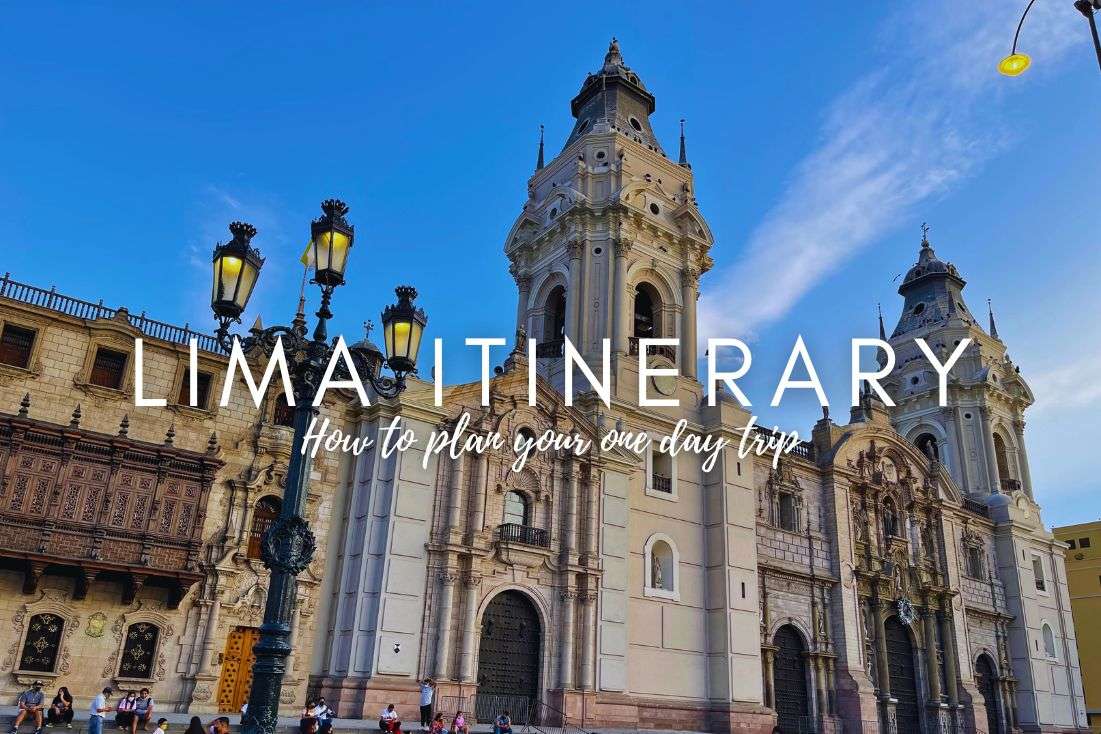
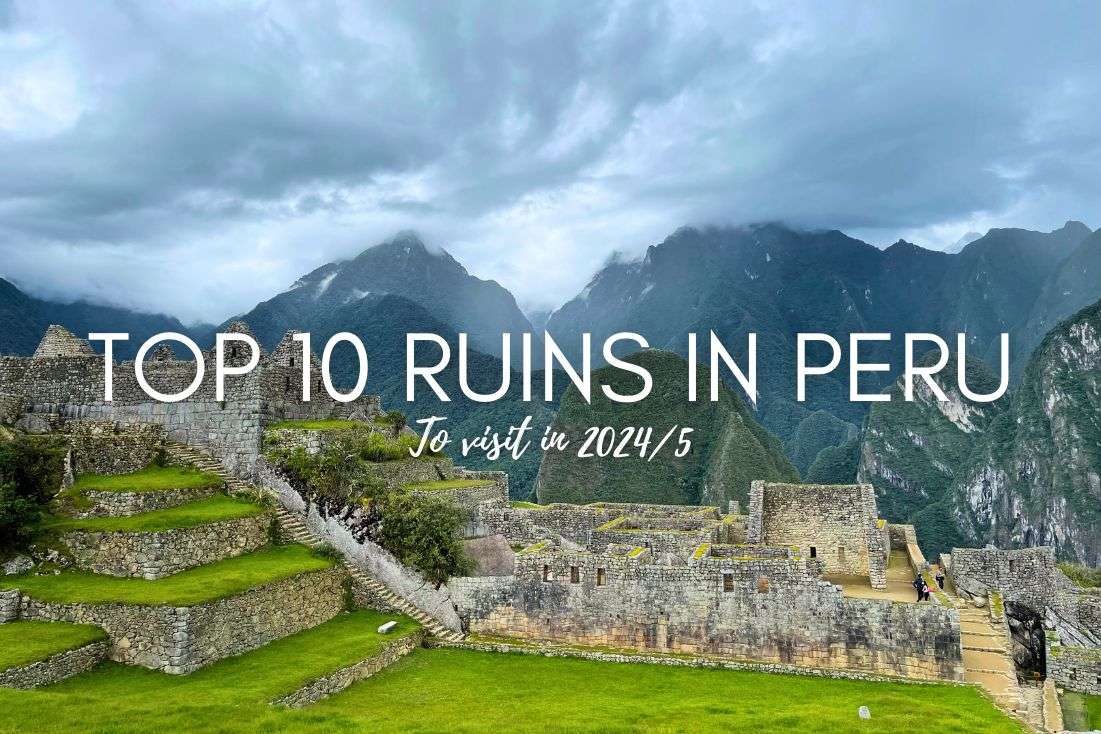
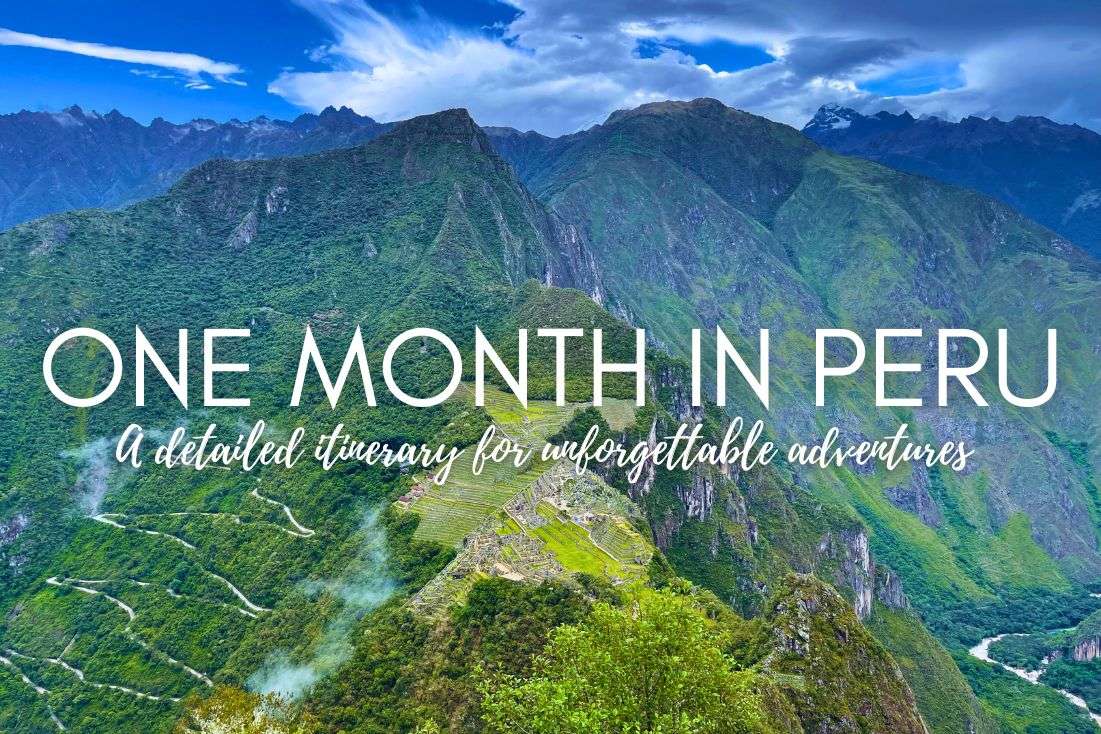



Comments | Thoughts? Give us a shout!